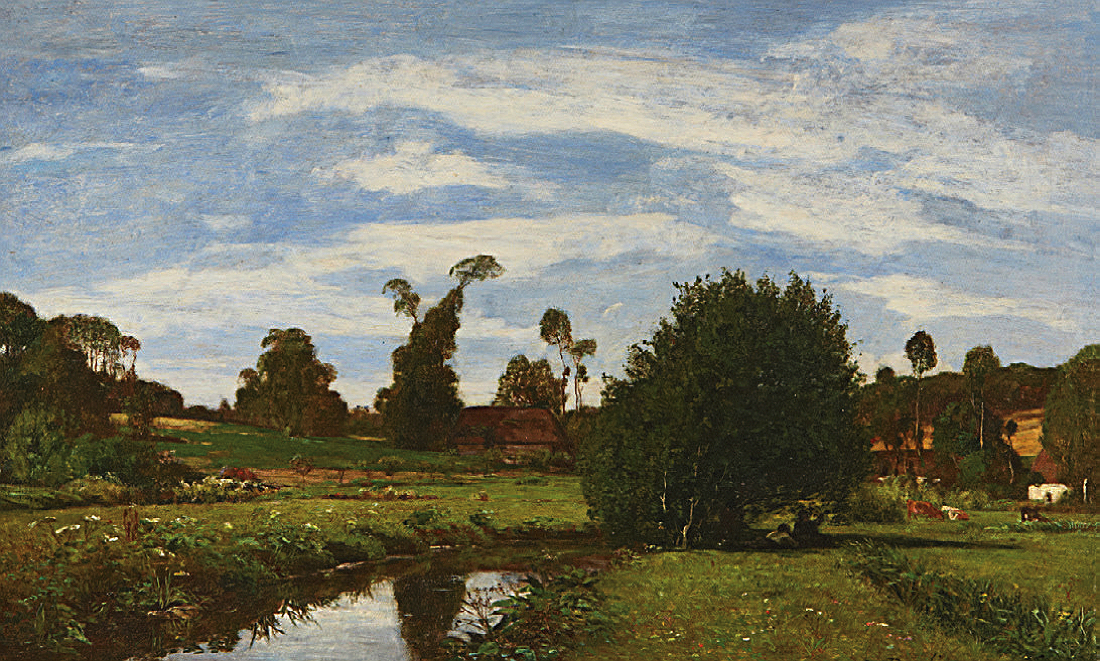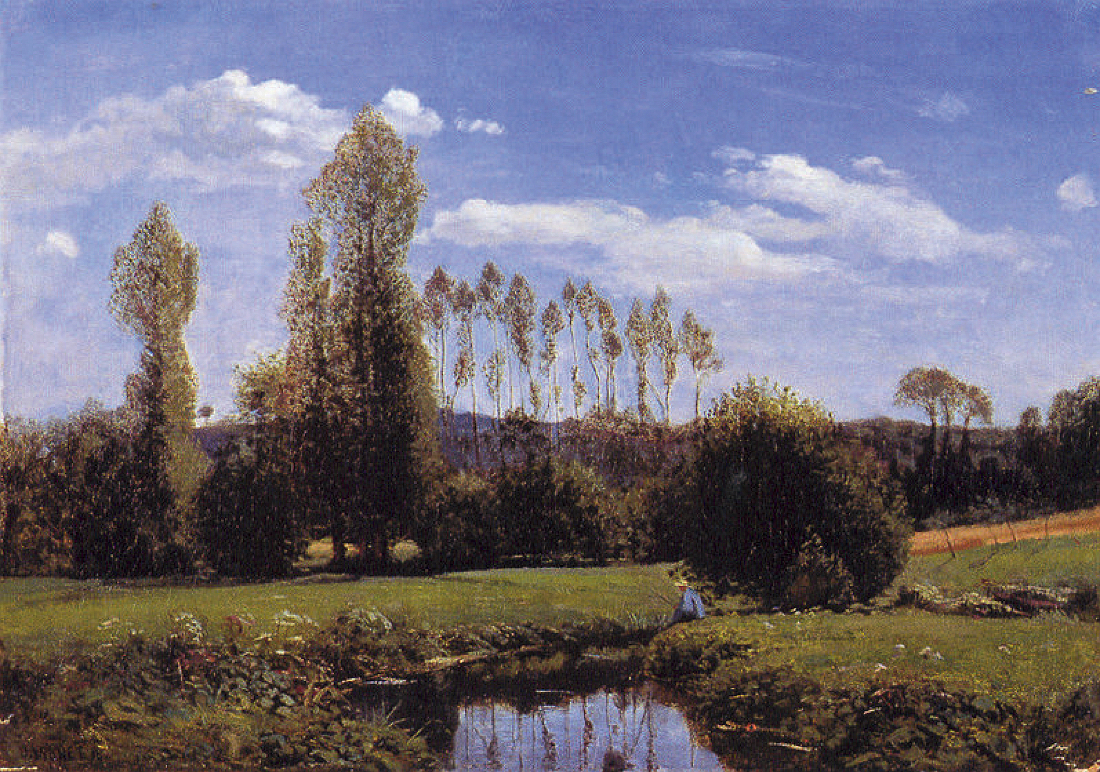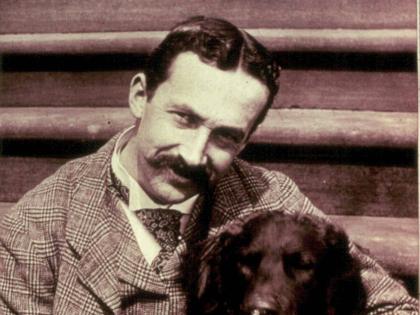Painting with Monet, by Harmon Siegel, Ph.D. ’21, JF (Princeton, $65). A Junior Fellow in the Society of Fellows performs the incredibly useful service of opening even untutored eyes to the ways artists work. Drawing on the results of Claude Monet’s outings to paint scenes beside fellow artists doing the same thing, he makes it clear what is at stake. The Monet and Boudin View of Rouelles, or the Monet and Renoir treatments of La Grenouillère, are differently seen and interpreted—and that makes all the difference, in terms of art-making and their common pursuit of impressionism.


Free Time: The History of an Elusive Ideal, by Gary S. Cross, M.Div. ’72 (NYU Press, $35). For all the promised leisure long expected to be the fruit of economic progress, time seems scarcer than ever—especially for industrious Americans, who work long weeks with limited vacations. Cross, professor of modern history emeritus at Penn State, engagingly explores “free-time scarcity and disappointment”—if you can eke out the hours, some summer day, to follow his inventive inquiry.
Orwell’s Ghosts: Wisdom and Warnings for the Twenty-First Century, by Laura Beers, Ph.D. ’07 (W.W. Norton, $26.99). It doesn’t take much imagination to see in the era of “fake news” and “cancel culture” the dystopia envisioned in Nineteen Eighty-Four, but the author, an American University historian, looks beyond that and Animal Farm to remind casual readers that Orwell was “a broad and deep thinker who opposed inequality as fervently as he opposed censorship and tyranny”—in Stalin’s Russia and in imperial Britain. A succinct, wide-ranging work of what might be called applied literary exegesis, concluding with a reminder to those on the political left that they can only achieve their aims “through common endeavor” with others.
Objects in Exile: Modern Art and Design across Borders, 1930-1960, by Robin Schuldenfrei, Ph.D. ’08 (Princeton, $65). The iconic architecture, art, and objects of modernism, a Courtauld Institute expert argues, “could only coalesce after a period of international mobility”: the “exile, emigration, and resettlement” from Europe to Great Britain and the United States. She traces how that changed ideas, materials, and more, yielding the works associated with Marcel Breuer, Walter Gropius, Josef Alberts, and other giants. Densely researched and thoughtfully illustrated.
Raiders, Rulers, and Traders: The Horse and the Rise of Empires, by David Chaffetz ’76 (W.W. Norton, $32.50). An ex-IBMer turned Asianist composes a sweeping narrative of the world before the Model T: “No animal has had as profound an impact on human history as the horse,” he observes. In the course of his research, he reached a Mongol encampment via “thick-necked, shaggy” ponies so trustworthy “I could have nestled myself against the pony’s mane and taken a nap” en route. Inventive and fun, particularly for the armchair adventurer who wishes to outsource saddle sores.
Insatiable City: Food and Race in New Orleans, by Theresa McCulla ’04, Ph.D. ’17 (University of Chicago, $32.50 paper). The former director of Harvard Dining Services’ food literacy project and leader of the brewing history initiative (really!) at the National Museum of American History (“Brew’s Clues,” March-April 2018, page 49), has gone legit. Mining the material culture of food in a city known for the same, McCulla manages to tell a larger tale about culture, race, power, and status. It’s the rare scholarly book that documents outrages such as the 1951 Campbell’s Soup advertisement appropriating gumbo.
The Neuroscience of Bach’s Music, by Eric L. Altschuler ’90 (Academic Press/Elsevier, $150 paper). A not undemanding but enthusiastic reading of Bach’s oeuvre in terms of human perception systems, motor control, cognitive processes, and more, by a New York Medical College physician and scholar. An interesting companion volume is The Artistic Eye, by Michael F. Marmor ’62, M.D. ’66, and James G. Ravin (Kugler, $60). Marmor, a Stanford ophthalmologist emeritus, and Ravin, with similar expertise at the University of Toledo, dive deep into the structure of the eye and the operation of vision, explicating how art works physically, with examples ranging from El Greco to Thurber’s famous cataracts.
The Interbellum Constitution: Union, Commerce, and Slavery in the Age of Federalisms, by Alison L. LaCroix, Ph.D. ’07 (Yale, $45). The Civil War prompted changes in America’s governance so significant that they are regarded as a second “founding.” The Reid professor of law at Chicago (who also holds a history appointment) argues that much constitutional debate transpired between the end of the War of 1812 and the onset of the Civil War, focused especially “on the question of what union meant” in the “adolescent” nation. By examining the discourse concerning “how the system should respond to conflicts among local interests and collisions among federal, state, municipal, and other authorities,” she also shines a light on contemporary governance and political ructions.
All the Campus Lawyers: Litigation, Regulation, and the New Era of Higher Education, by Louis H. Guard and Joyce P. Jacobsen ’82 (Harvard, $45). If anyone missed U.S. Representatives berating university presidents during the past academic year, this book reminds us that the academy exists not only in a politicized context but also a highly legalistic one. The general counsel and president emerita at Hobart and William Smith explain how this “lawyerization” came about and what it encompasses: civil rights, free speech (and how, this year), student life, admissions, governance, and more. Most schools didn’t even have a general counsel half a century ago; today, sadly, a J.D. might better prepare presidents than a Ph.D.
A Year of Birds: Writing on Birds from the Journal of Henry David Thoreau, edited by Geoff Wisner ’80 (Mercer University Press, $27 paper). If you do get some free time in New England this summer, Wisner’s third collection from the copious journals of Thoreau, A.B. 1837 (following volumes on wildflowers and animals) would be good to have on hand. Beautifully illustrated by Barry Van Dusen. From July 4, 1852: “A [ruby-throated] hummingbird hums by over the pads up the river as if looking like myself to see if lilies have blossomed.”
From Loss to Memory: Behind the Discovery of Synaptic Pruning, by Anna Huttenlocher, M.D. ’88 (Cambridge, $84.99). This unusual book, by a professor of medical microbiology at the University of Wisconsin, recounts the discovery of the process by which the billions of neural connections are sorted out in the developing brain (and the disorders that result when the process misfires)—in the form of a daughter’s memoir of her late scientific father, Peter, M.D. ’57. The result is an accessible introduction to cognitive neuroscience at its origins—and a reminder, as well, of the talent that emigrated to the United States in the wake of the Nazi catastrophe and World War II.
Conscription, Conscientious Objection, and Draft Resistance in American History, by Jerry Elmer, J.D. ’90 (Brill Studies in Peace History, $136). A Vietnam-era draft resister and peace activist (who accordingly entered Harvard Law School class as his class’s only felon) continues his work with a comprehensive U.S. history of the brutal business of raising armies, often in the face of furious opposition. The anecdotes opening the book—about Civil War draft riots and the murder of conscription officers—set the stage for a narrative that may seem remote in the era of the all-volunteer military. But given the butchery continuing along the front between Ukraine and Russia, it is useful to be reminded that the draft was a daily fact of life in this country not so very long ago.
And for the younger set, Extreme Weather for Kids, by meteorologist and storm-chaser Matthew Cappucci ’19 (“A Weather Obsession,” March-April 2022, page 42), delivers the promised “lessons and activities all about hurricanes, tornadoes, blizzards, and more” of the subtitle (Quarry Books, $19.99 paper). In the same vein—big, noisy things—is Cosmic Collisions: Asteroid vs. Comet (MIT Kids Press, $17.99), by Marc Kuchner ’94 and Matt Schu, an introduction to objects in space, perhaps especially useful for children who will not go to sleep at bedtime and so could be introduced to the night sky and things Out There. Penelope’s Balloons (Union Square Kids, $18.99), a debut children’s book by cartoonist, illustrator, and former neurobiology student Brooke A. Bourgeois ’17, draws on all those talents, and a winsome elephant character, to explore identity and community—an act of creativity informed, as well, by the author’s younger brother, who has autism.









